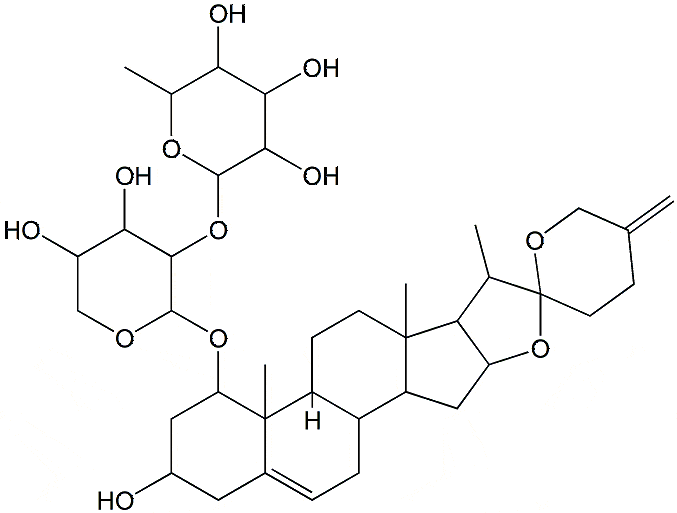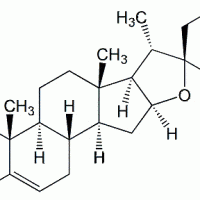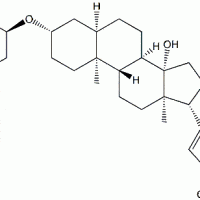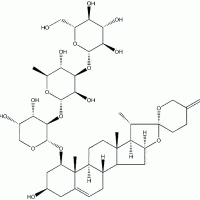- Required Weight missing.
Abstract
In the past, Ruscus aculeatus L. (butcher’s broom) was used by a variety of peoples as a treatment for a variety of ailments. In Europe, it was claimed that the rhizomes could be used as a laxative or diuretic while, in ancient Greece, butcher’s broom was believed to remove kidney stones when added to wine. Extracts from butcher’s broom have considerable pharmacological properties. The compounds within butcher’s broom that possess pharmacological properties are the steroid glycosides/saponins (ruscin and ruscoside) and their hydrolysis products (desglucoruscin (CAS 39491-37-7), desglucodesrhamnoruscin and desglucoruscoside). Desglucoruscin is being studied for its use in prevention and in the treatment of hemorrhoids and other vascular conditions (swelling, inflammation, etc.)
Find our entire collection of steroidal glycosides here.
Compound Details
| CAS | 39491-37-7 |
|---|---|
| Molecular Weight | 706.9 |
| Chemical Formula | C38H58O12 |
| IUPAC | 2-[4,5-dihydroxy-2-(16-hydroxy-7,9,13-trimethyl-5'-methylidenespiro[5-oxapentacyclo[10.8.0.02,9.04,8.013,18]icos-18-ene-6,2'-oxane]-14-yl)oxyoxan-3-yl]oxy-6-methyloxane-3,4,5-triol |
| Synonyms | Prosapogenin 1, Ruscoponticoside C |
| SMILES | CC1C2C(CC3C2(CCC4C3CC=C5C4(C(CC(C5)O)OC6C(C(C(CO6)O)O)OC7C(C(C(C(O7)C)O)O)O)C)C)OC18CCC(=C)CO8 |
| Purity | 95%+ |
| Storage Temperature | Below -18 degrees C |
| Storage Conditions | Dry, freezer |
Product Use Disclaimer
Products are sold as laboratory reference materials, to be used for diagnostic and in vivo testing. The samples are not certified for veterinary or human use.
$17.60 - $24.00 / milligram
| Range (milligram) | Price ($/milligram) |
|---|---|
| 10 - 24 milligram | $24.00 / milligram |
| 25 - 99 milligram | $22.50 / milligram |
| 100 - 249 milligram | $20.40 / milligram |
| 250 - 499 milligram | $18.80 / milligram |
| 500 - 1000 milligram | $17.60 / milligram |
Technical Support
Product information is from published literature. Due to the nature of scientific experimentation, results or specific product application may vary (e.g., selectivity, detector response). If you have questions about the product, its application, and associated analytics, please contact our technical support team.
Related products
-
View Item
Ruscogenin – CAS 472-11-7
PRICE ON REQUEST -
View Item
Oleandrin – CAS 465-16-7
PRICE ON REQUEST -
View Item
Ruscin – CAS 39491-41-3
PRICE ON REQUEST





